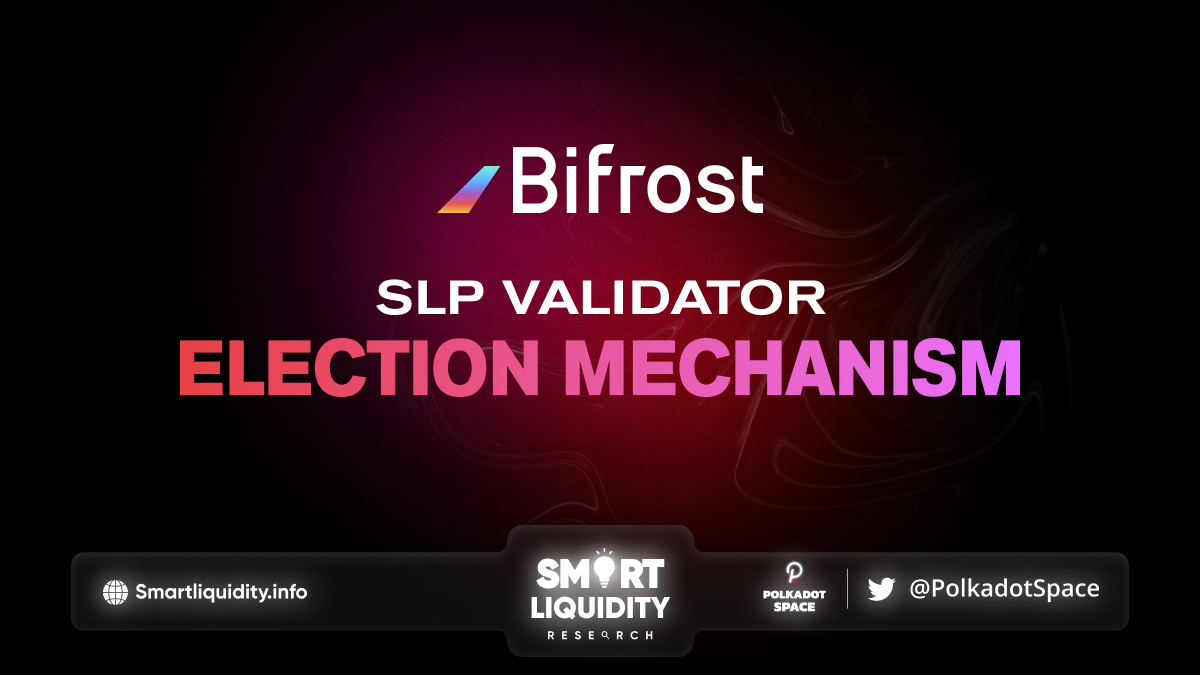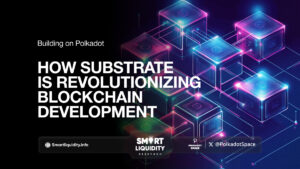Bifrost SLP Validator – Election Mechanism


VET – Validator Election Track based on Bifrost OpenGov for the Multichain
The Bifrost SLP Validator protocol developed is a liquid staking protocol. Users send the Token they want to stake to the SLP protocol, and the SLP protocol executes the stake and mints liquid derivatives vToken for the user. The Token pledged by the user will be entrusted to the validator by SLP, and then participate in the consensus maintenance work of the PoS network. Bifrost does not operate the validator itself. To ascertain vToken’s fungible property, the SLP protocol will replace the user to exercise the right to select validators.
Previously, delegated validators were elected through council voting. In the future, they will integrate a new delegated validator election scheme. They’ve optimized the new arrangement on the basis of the original scheme.
First – They divide the seats of entrusted validators into two parts, the Validator White List (VWL) and Validator Boost List (VBL). A set of clear validator rating selection rules will generate the former, while the active application of nodes will render the latter and the Bifrost community votes for approval. The SLP protocol will only entrust the assets staked by the user to the validators in these two Lists.
Second – They plan to launch a governance voting track dedicated to validator elections: Validator Election Track (VET) in conjunction with Polkadot OpenGov. The VWL and VBL need to pass the VET voting process before officially taking effect. VET is a referendum process, which means that the power that originally belonged to the council now belongs to the entire Bifrost community.
The Validator White List
When entering the VWL validator, we will score the validator according to the defined scoring rules. Validators with a score above the threshold will automatically obtain the VWL qualification without actively applying.
The main factors that affect the score include:
- The Validator decentralization: they will make the distribution of our voting power relatively balanced in geographical location and jurisdiction;
- The Validator reputation and security risk include the central information of the validator under the chain, the duration of the validator, the number and period of the validator’s disconnection, etc.;
- Security risk: their model will consider the number and severity of Slash in the validator history;
- The Validator leverage ratio: When we allocate voting rights, we will consider the self-delegate amount of the validator to avoid excessive leverage of the validator (referring to the proportion of the validator self-delegating in the total delegation);
- Yield: Including the historical income performance of the validator and the Staking income commission ratio provided to the client.
We will dynamically adjust the list according to the changes in the scoring situation if VWL is unfixed. Validators with bottom-ranking scores ranking will receive clearance, while validators whose score ranking improves beyond the bottom will be selected.
Validator scoring happens off-chain, and the Validator White List drawn up based on the scoring needs to pass the VET referendum before it officially takes effect on the chain.
The revision of the VWL needs to be confirmed by the VET referendum.
Validator Boost List
VBL is a dedicated seat for validators that provide added value. Validators can actively apply to the Bifrost community through VET proposals. After the referendum passes, the validator can officially enter the VBL list. We expect VBL validators to provide added value to the SLP protocol or vToken holders to promote the long-term development of the protocol.
E.g:
- Provide liquidity for vToken / Token trading pairs
- Provide exposure and user promoting opportunities, or promote user education and guidance, and increase vToken minting volume.
- Facilitate the integration of vTokens in DeFi applications
- Provide other forms of benefits to vToken holders
VBL validators are a more elite group with higher priority than their VWL counterparts. As the default period for qualification is six months. VBL node holders must renew routinely to maintain their status — and doing so requires initiating a referendum each time, ensuring that only stable candidates receive the SLP vote entrustment.
Although the first word of VWL and VBL is Validator, validator roles differ in PoS chains. For example, for the Polkadot / Kusama relay chain or other Layer1 blockchains, the validator name is a Validator, and for the parachain, the validator is a Collator. For Layer 2 of the Rollup class, the validator may also be a Sequencer (sorter), but their common feature is that they all require staking.
VBL Application Procedures
1: Draft Proposal
Validator operators publish a draft VBL proposal in Bifrost Discussion, indicating the added value they can provide, as well as the number and duration of delegation they hope to obtain.
Reference draft: https://bifrost.subsquare.io/post/1
2: Launch a referendum proposal
In the case of good discussion and feedback related to the post, the validator operator can initiate a referendum proposal. Learn how to propose one referendum proposal:
3: Proposal referendum
According to the governance process of VET, there will be a 7-day voting period and a 2-day execution period after the voting is open. If the referendum is pass, the cooperation will be establish; if the referendum is not pass, the cooperation will be temporarily stranded.
4: Proposal Execution
If the proposal is pass, the validator will be automatically add to the VBL. The executive representative of VET will continue to promote the implementation of the relevant proposal content according to the content of the proposal.
5: Regular review
The executive representative will regularly check the situation throughout the proposal execution process, as well as the performance of the validators in terms of revenue and performance. If a problem is found during the period. It will communicate with the validator operator and promote the solution of the problem. If the proposal cannot continue to be implement, the SLP committee can initiate a referendum through VET to terminate the VBL qualification of the relevant validator.
Conclusion
In general, Bifrost follows the following principles to formulate rules for validator election.
- Maintain the security of the original PoS chain.
- Maintain/expand the interests of vToken holders.
- Promote the long-term development of the SLP protocol.
To ensure the protection of vToken holders & maintain a secure PoS chain. They will be delegating to as many validators from diverse geographic locations with varying jurisdictions. Furthermore, their VWL scoring scale considers both the return rate for validators and the security credentials of nodes to best optimize outcomes for those investing through them. To stay ahead of development opportunities that could benefit SLP protocol long-term. They’ve structured VBL with reserved quotas allocated towards added value providers brought by particular qualified validators.
Due to the liquidity staking model, continuous development of SLP protocol, more token holders will be willing to become Stakers. Increasing the PoS validator operator market. They hope that most validator vendors can actively participate and jointly develop and explore the untapped value in Staking Finance while reaping the dividends of entrusted ticket rights for liquid staking.
About Bifrost
Bifrost a cross-chain network built on a substrate that gives liquidity to staked assets as staking derivatives. It is based on open-source platforms, primarily as a Polkadot parachain. Because of Bifrost’s cross-chain functionality, others can create integrations to enable staking on other PoS.




